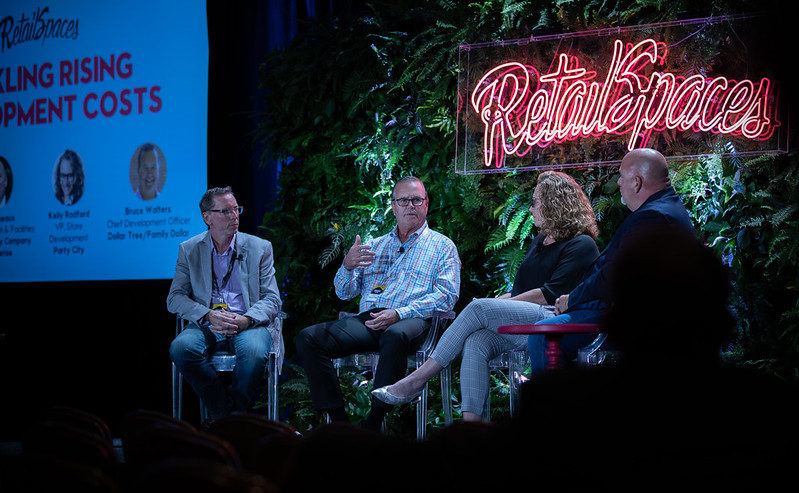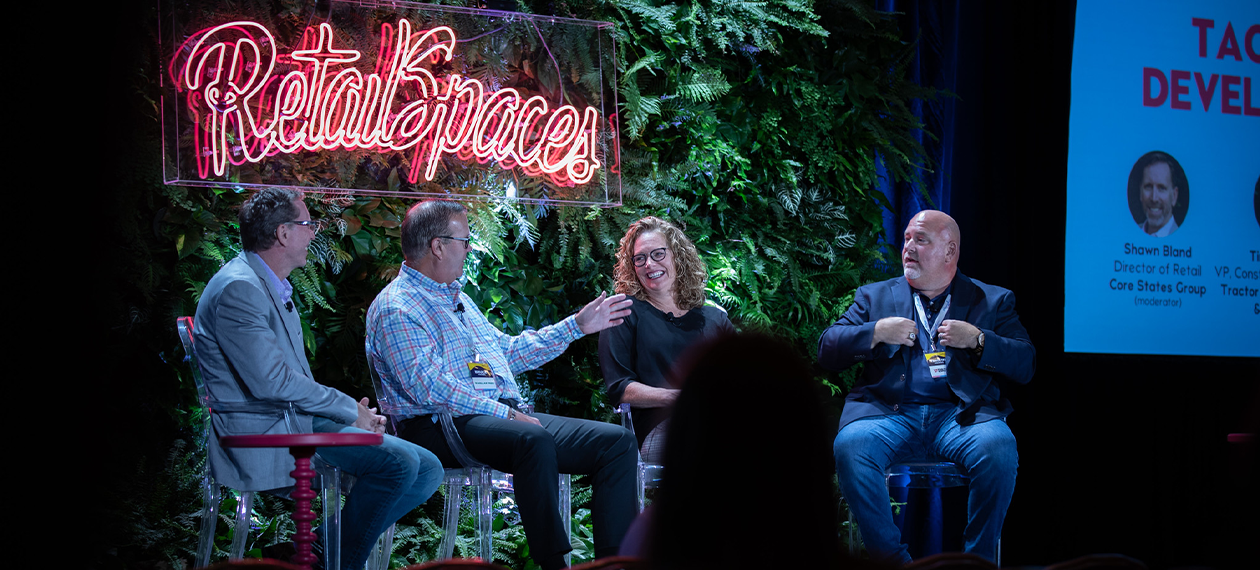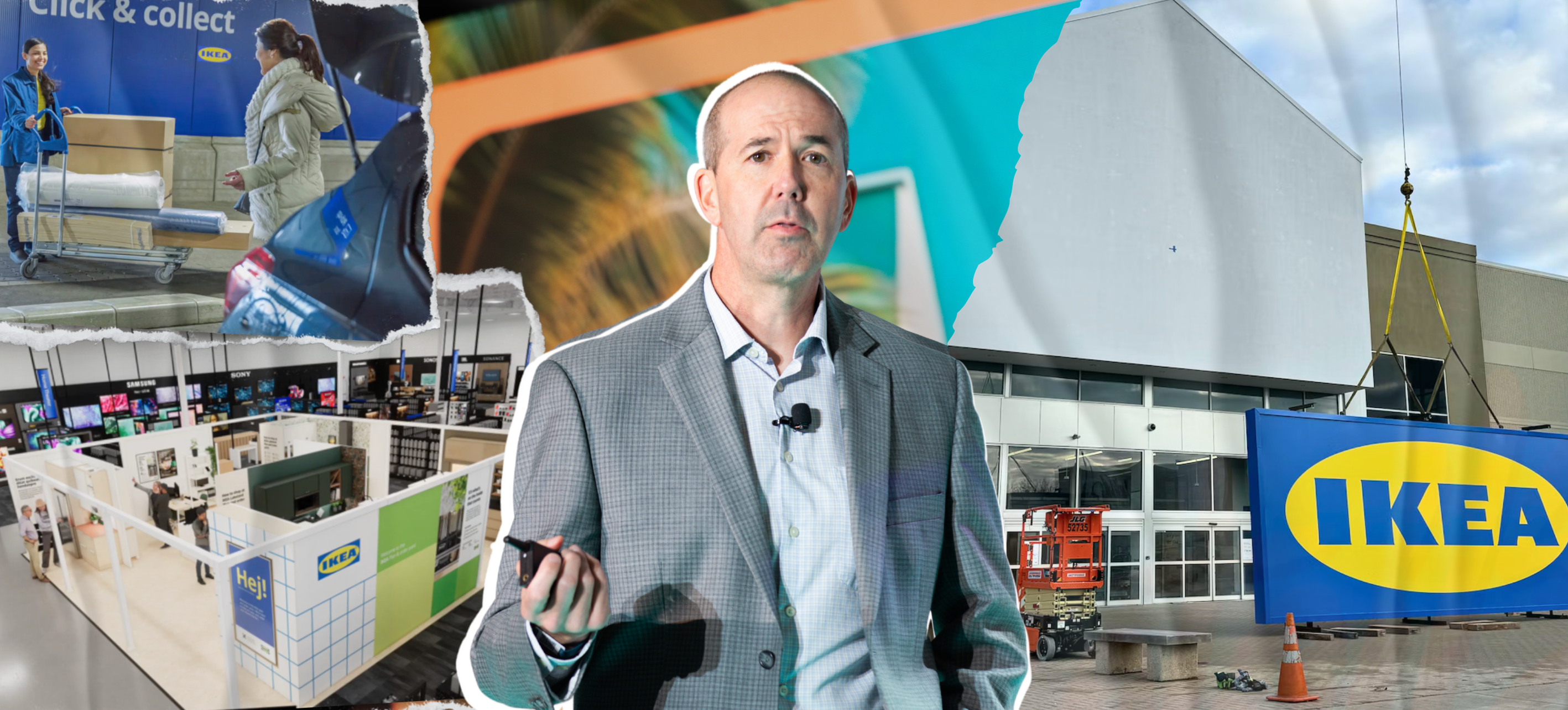Construction costs have been continuously rising year over year for over a decade now, at a rate of 1.5 percent per quarter. Rising material costs, escalating trade tensions, tougher permitting requirements, and severe skilled labor shortages are all contributing factors.
Tariffs and labor are things retailers cannot control, which makes it all the more important that they focus on the things they can. In a discussion at RetailSpaces, retail development leaders from Party City, Tractor Supply Company, Dollar Tree and Family Dollar spoke openly about their struggles, strategies, and successes in addressing the problem of rising costs. TL;DR: Communication is key.
Communication: TheThe Cost
The panelists all talked about the importance of communication — making sure everyone both internally and externally are on the same page at all times.
So what exactly are these retailers doing to make this happen?
Kelly Radford, Vice President of Store Development at Party City, said that communication starts with the engagement of the design team.
"They have all these cool ideas and great ways to spend your money,” she said, “so the first question needs to be, 'What's the price tag?'"
The design team needs to be integrated early on with the construction team so they can design with costs in mind. In fact, it really begins with the real estate itself, bringing both the design and construction teams into the spaces to see what they have to work with and what challenges could arise.
"We're not going to stop these costs from going up; we just have to learn how to deal with them," she stated.
"We're not going to stop these costs from going up; we just have to learn how to deal with them."
Bruce Walters, Chief Development Officer at Dollar Tree and Family Dollar Stores, said his stores are all just simple 10,000-square-foot rectangles. But when architects or in-house design teams start to overdesign them, or operators and merchants get involved, they suddenly want all the bells and whistles without realizing how those things drive up the cost.
"You have to stay on that and you have to explain to them that not only does it cost you money, but it costs you time, and time in our business is more important. Sales dollars are everything," he said.
Moderator Shawn Bland, Vice President of Retail Development and Director of Retail at Core States Group, acknowledged that management wants all these pretty extra things until the costs start coming back, and then you have to start cutting back.
Tim Jagneaux, Vice President of Construction & Facilities at Tractor Supply Company, had a similar experience to share. After being pressured to cut costs more and more on what was already a pretty stripped-down box design, he removed the one element that cost the most and was the most expendable: the elaborate towers at the front entrance of every store that cost about $40,000-50,000 each.
"You sit there and you think, 'Well, short of popsicle sticks and duct tape, I don't know what else to do,'" he said. "Tractor Supply is about as simple a building as it gets. Then you start thinking, 'What can I take off of this building?' and it becomes a decision of, 'Do I take that off to save the money? But what is that doing to the brand? Is that a critical part of the brand?'"
Apparently, yes, those towers are a critical part of the brand. When Jagneaux's team built a value-engineered prototype without the towers, Tractor Supply's executive committee immediately demanded they be put back on. It turns out, they didn't like the sacrifices necessary to save $40,000.
Controlling the Change Order
Walters said his family of brands "stamps out" anywhere from 30 to 50 new buildings each month, and in order to do that effectively, they stay as simple as possible with the store design. The problem with getting the think tanks, merchants, and operators involved is a little thing called the change order.
"That's the one thing your internal folks don't realize — that at the end of the year you've blown your budget by a couple million dollars on change orders," he said. "That's the kind of stuff you have to control."
Jagneaux suggested one method of controlling the dreaded change order: If the contractor goes ahead with a change requested by the store manager without first speaking to the project manager, then that contractor has agreed to make that change for free at his own expense.
"One of the first conversations we have with a contractor is to tell them, 'If a store manager tells you to do something and you take it upon yourself to do it, while you're there doing the work you need to be saying to yourself, "This is a gift. I'm doing this as a gift out of the goodness of my heart."' We tell them, 'You contact your project manager first before you turn the first screw or you are completely at risk,' and it somewhat helps mitigate that."
Buying Bulk Materials and Treating Contractors as Partners
Another way store development leaders have been able to control costs is buying their own materials in bulk and supplying them to the contractors. Walters said they've started buying their own HVAC, steel, and lighting, which helps them save money two-fold: both in the material costs and the contractors' costs.
"Contractors will bend over backwards to help you on their costs if you supply material to them," he said.
Tractor Supply has been doing the same thing for certain projects—direct-purchasing the HVAC and lighting packages just to save the markup from the contractor. Jagneaux also said that getting contractors involved early on and working with one contractor for several projects instead of getting three to five bids for each project creates more of a partnership and also helps to drive down costs through the promise of additional work. This in turn also helps to control the change orders.
"Then the contractor is going to give you a better price because he knows he's not going to have to compete against four other bids," Bland pointed out. The added sense of loyalty fostered with the contractor goes a long way. Walters also agreed, essentially making the point that you catch more flies with honey, and if you're good to your contractors they'll be good to you.

Better Planning with Software
Today's project planning software is designed to make life easier for everyone working in construction.
"I'm a big believer in software programs and project management systems to help with designing and permitting as quickly as we can," Radford said. Through these software programs, she can track what's going on at each location, who needs to be contacted, see if the architects have updated their drawings for the permits, and so much more.
"The more we can button up our communication the better we're going to be at making those changes."
"All of that is heavy on communication, and without certain systems and programs it's going to be really hard to communicate that information out and make sure the designs are changed, and finding out when they're changed [so you're not] slowing down permit times," she said. "The more we can button up our communication the better we're going to be at making those changes."
Prior to Tractor Supply, Jagneaux was at a company with a "really nice" lifecycle management system in place. Unfortunately, Tractor Supply still works entirely off Excel spreadsheets, and convincing anyone to make the investment to upgrade has been a hard sell.
This admission drew quick sympathy from the rest of the panel.
"Lifecycle management is so important," Walters said. "You can't manage more than five to ten projects at a time on Excel. [With lifecycle management programs], vendors and operators are notified at every step. You almost have to have it."
Radford added that the programs are pretty intuitive, and the costs of having multiple people emailing around separate spreadsheets and the many, many opportunities for mistakes along the way far outweigh the expense of upgrading. Additionally, web-based platforms like Expesite and Sitefolio are more affordable than custom in-house programs.
Time is of the Essence
Ultimately, time is money and money is time. Radford said if she has any advice to give, it's to allow themselves enough time.
"If we allow ourselves enough time that's giving you more runway with a problem so you're not dealing with it in the middle of a project," she said. "We have to educate our partners and say, 'Hey, we're running out of time here, if you're going to make a change you need to do it now. If you don't it's going to impact everything else.'"
In other words, once again: communication is key.
Subscribe to get the latest RetailSpaces insights and keep up-to-date on what to expect when we hit LA in 2020 (Sept 20-22).

Posted by
Physical Retail Reimagined.
RetailSpaces is a community for store development and design innovators.
March 29-31, 2026 | San Antonio, TX
Learn More!


-4.png)

-4.png)



Comments